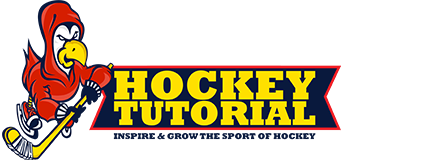A lot of the time, skaters and hockey players get to accustom to stopping with one skate (or foot) in front in almost a snow plough style, while the other skate is left behind for balance, this can be a major problem as when it comes time to learn the real hockey stop, you then have to unlearn everything you already know about stopping. Skaters get to use to having one skate behind supporting their weight, while the other skate is used to push into the ice and bring them to a stop. Hockey stopping is all about edge control and momentum, you might be thinking that if you move your support skate from behind and into the correct hockey stopping position, you’ll lose balance and fall, which is wrong (if the stop is carried out correctly).
 You must bend your knees over the toe cap of your skates, this ensure your weight is in the correct place (directed towards the centre of your skates) if you bend your knees too much, the weight will be forced towards to front of your skates (cause you to fall forward), and if you bend your knees to little, the weight is then forced to the back of your skates (cause you to fall back).
You must bend your knees over the toe cap of your skates, this ensure your weight is in the correct place (directed towards the centre of your skates) if you bend your knees too much, the weight will be forced towards to front of your skates (cause you to fall forward), and if you bend your knees to little, the weight is then forced to the back of your skates (cause you to fall back).
.
Knees bent
.
 Lean slightly back to alter the position or angle of the blades edge (leaning to far back will result in you falling back and not leaning enough will cause the blades edge to dig into the ice and you to fall forward)
Lean slightly back to alter the position or angle of the blades edge (leaning to far back will result in you falling back and not leaning enough will cause the blades edge to dig into the ice and you to fall forward)
Try keep shoulders and your head parallel to the ice
 Check your speed? – if you’re going fast you need to compensate either by putting your weight down quickly to bring you to a quick stop or by making sure the blades edge doesn’t dig into the ice by control how much you lean back or forward (as stated earlier).
Check your speed? – if you’re going fast you need to compensate either by putting your weight down quickly to bring you to a quick stop or by making sure the blades edge doesn’t dig into the ice by control how much you lean back or forward (as stated earlier).
The momentum from skating (before you stop) is what is used to push your body from the leaning back position to the correct upright position (trust your edges to do their job) your blades should shave the ice briefly before stopping, once they stop you are then almost thrown from leaning back, to the upright position.
The snow plough should only be using at the beginning of learning to skate, once mastered, move onto hockey stopping before your body gets to use to stopping with only one skate.




